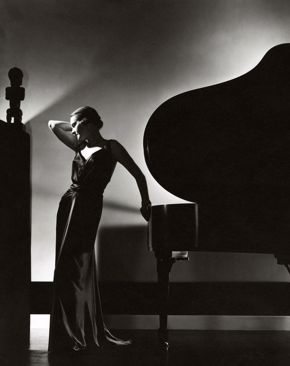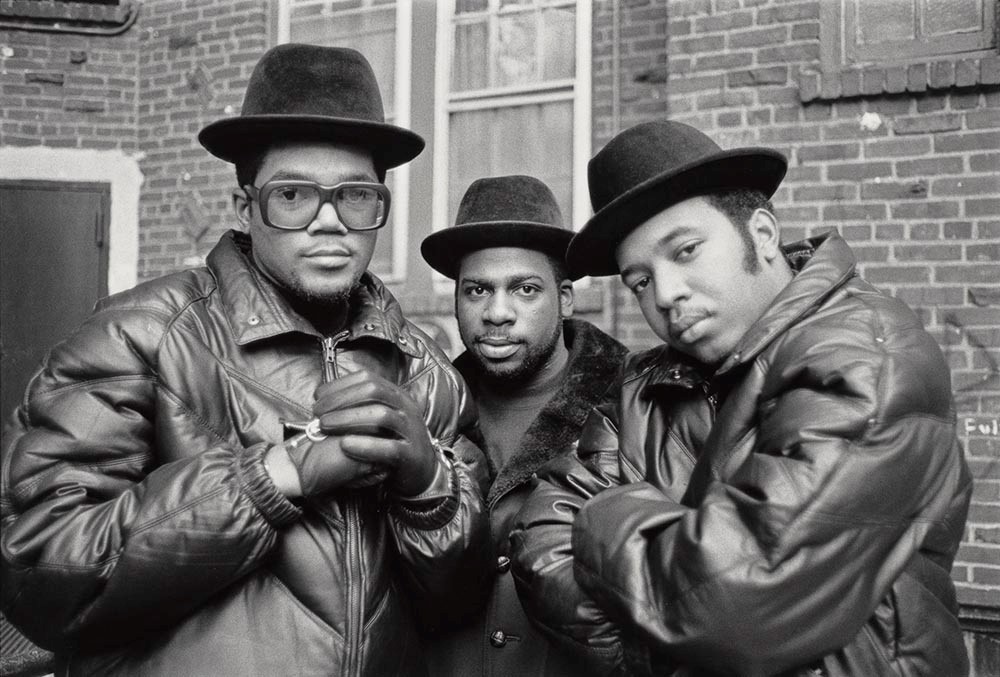Photography at the Nexus of Music and Fashion June 24, 2019

Edward Steichen, Perfection in Black, 1935, gelatin silver print, Condé Nast Archives. © Condé Nast
Glen E. Friedman, published by Glenn Horowitz Bookseller, Run-DMC, from the portfolio Selected Works 1, 1985, printed 2014, gelatin silver print, the Museum of Fine Arts, Houston, Museum purchase funded by the Buddy Taub Foundation, Dennis A. Roach and Jill Roach, Directors. Photograph: Glen E. Friedman © 1985
These photographs are among more than 200 featured in the exhibition Icons of Style: A Century of Fashion Photography.
Although fashions and musical styles have shifted significantly over the years, one thing has stayed the same: Photographs of chic models and trendsetting musicians remain a staple of popular culture. In the early decades of the 20th century, haute couture was the domain of the wealthy elite, and some magazines catered to that market as well.
Perfectly Orchestrated
Edward Steichen, who is said to have conducted the first modern fashion photo shoot in 1911, worked for Vanity Fair and Vogue magazines from 1923 to 1938. He became known for his perfectly orchestrated images of models and celebrities posing amid elegant surroundings.
Steichen’s 1935 photograph of model Margaret Horan posing next to a piano exemplifies his refined style. He employed dramatic lighting to emphasize the silk-clad curves of the model and the sinuous lines of the instrument. Perfection in Black ran in the November 1, 1935, issue of Vogue.
Postwar to Punk
In the postwar years, fashion and music underwent vast changes and became increasingly intertwined. Ready-to-wear designs made stylish clothing more affordable, and musical trends spawned particular looks that became associated with certain designers. Vivienne Westwood pioneered the punk sensibility of the 1970s, and Marc Jacobs embraced the grunge look of the 1990s. Individual musicians also had an outsize impact on clothing trends, like those launched by Madonna and David Bowie—who sang about fashion in their respective songs “Vogue” and “Fashion.”

Paving the Way
In the 1980s, nascent hip-hop groups like Run-DMC introduced a new look in addition to a new sound: all-black clothes, white Adidas sneakers, and “dookie chains” (heavy gold rope necklaces). In a now-iconic black-and-white picture taken in 1985 by photographer Glen E. Friedman, Joseph “Rev Run” Simmons, Darryl “D.M.C.” McDaniels, and Jason “Jam Master Jay” Mizell don their signature matching fedoras. Friedman, known for his portraits of emerging punk, hardcore, and hip-hop groups of the time, traveled to the Hollis neighborhood of Queens, New York, to conduct the photo shoot on Run-DMC’s home turf. This image, used to promote the group’s influential second album, King of Rock, was among several by Friedman that helped popularize the hip-hop movement and pave the way for the rappers of today.
► See more in “Icons of Style: A Century of Fashion Photography,” on view in the Law Building through September 22.





